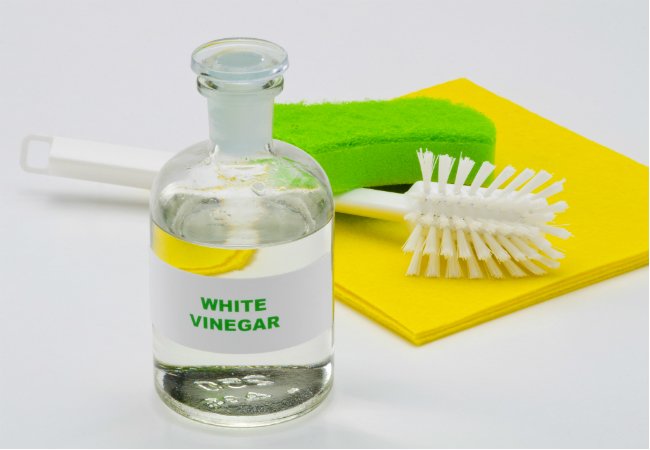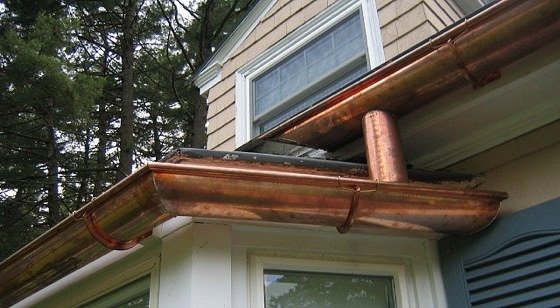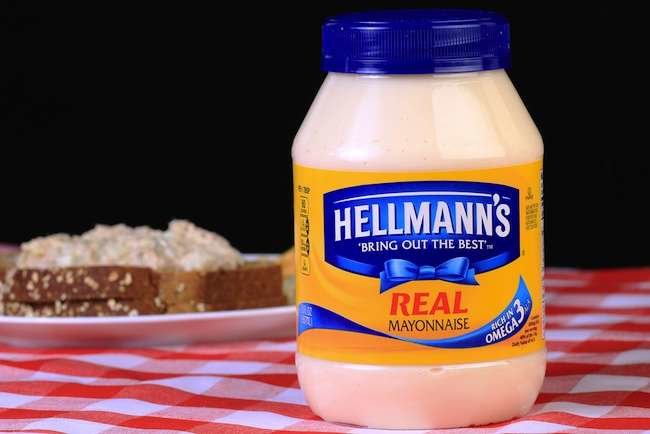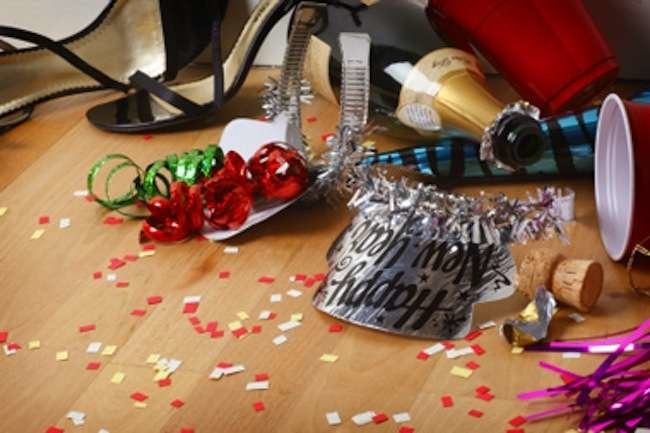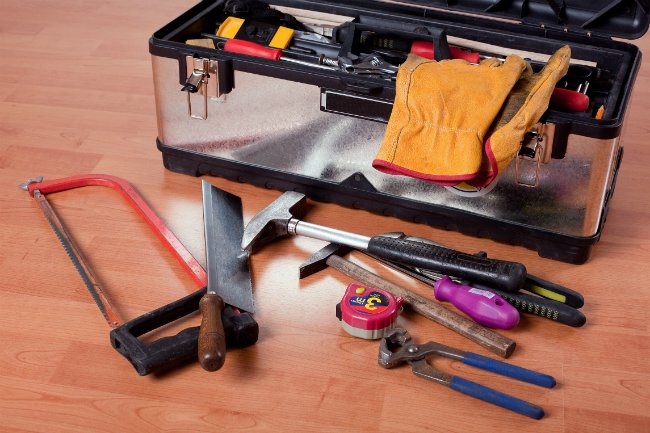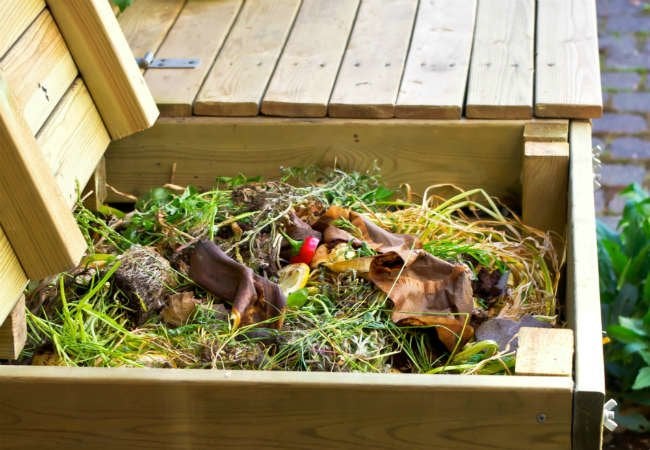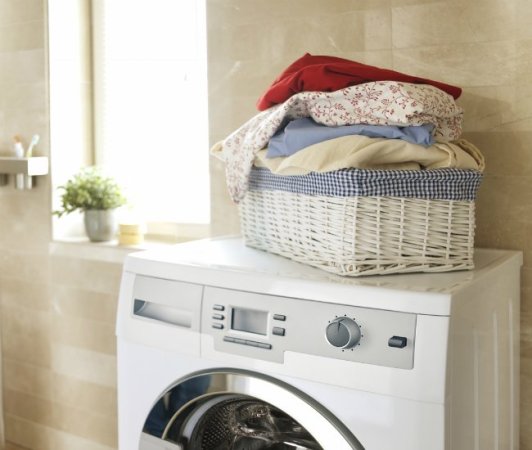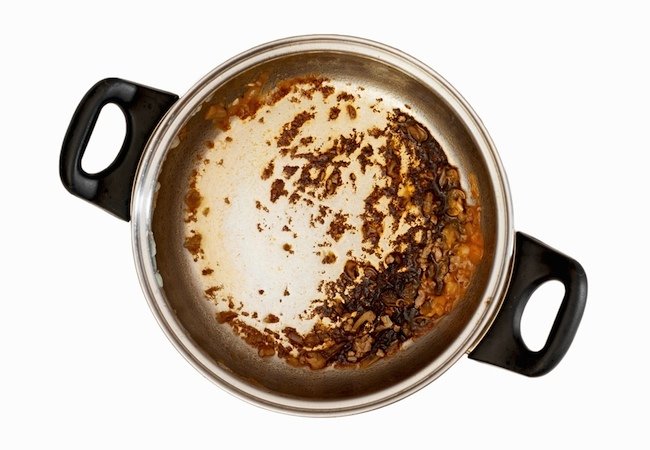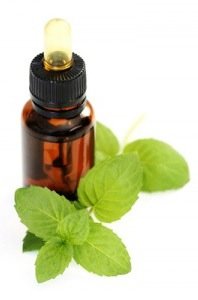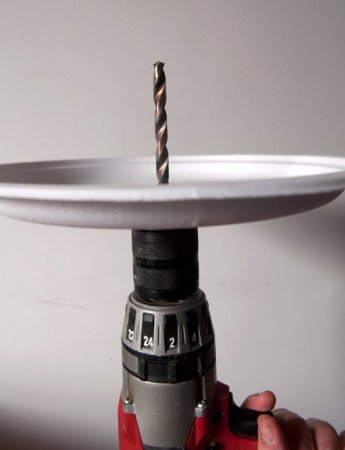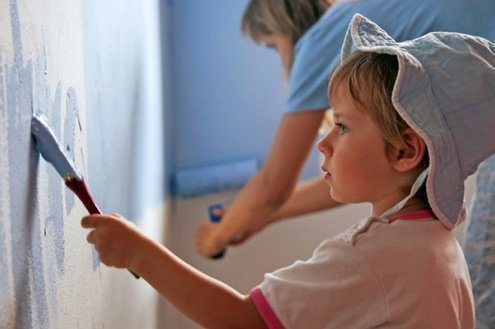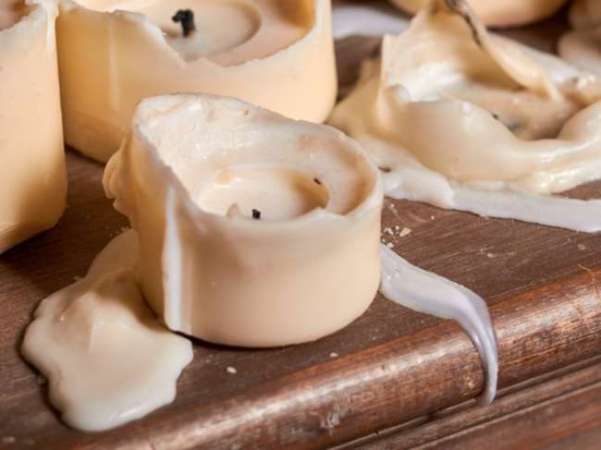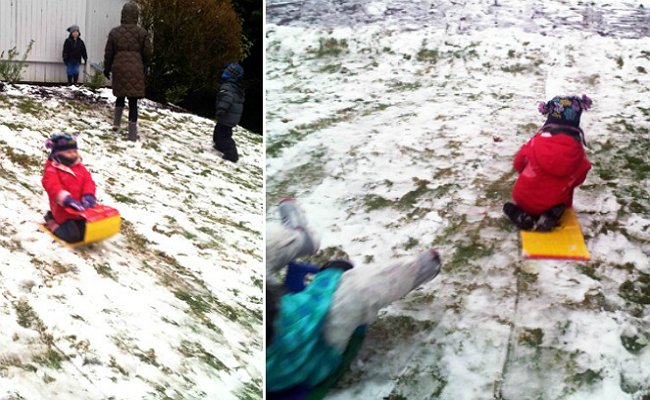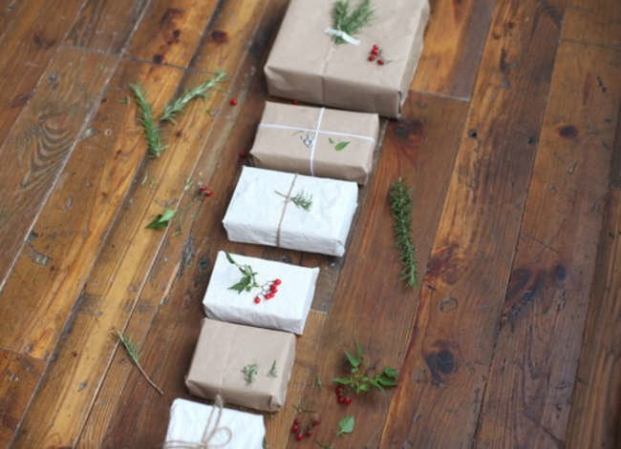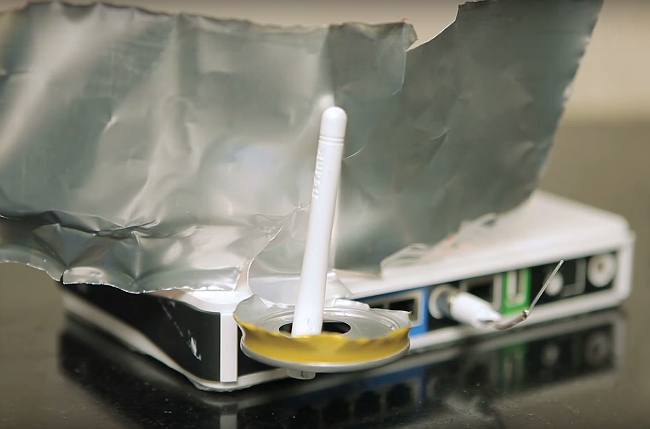We may earn revenue from the products available on this page and participate in affiliate programs. Learn More ›
For homeowners who appreciate all-natural ingredients and saving money on household necessities, baking soda and vinegar have been longtime favorites for tackling household cleaning. But it’s a lesser-known fact that cleaning with vinegar alone can achieve sparkling results, too—no need to fret if you’ve run out of its powdery sidekick before finishing the gallon bottle. Whether your house is in need of deodorizing or descaling, just pull out the jug and refer to these seven tips the next time.
1. Erase crayon marks.
If you have children in your home, you probably know the woe of walking into a room and finding a colorful design on the walls other than your paint job. Never fear; cleaning with vinegar can clear those crayon doodles right up. Using a toothbrush and somewhere between ¼ and 1 cup of white vinegar (depending on how much “art” you need to remove), move in small, gentle circles across the crayon marks to break down the wax, and then gently wipe away.
2. Clean a shower head.
Clogged shower heads aren’t just unsightly to look at; they can also reduce your water pressure, leaving you feeling less than refreshed even after you suds off. To return your shower stream to full strength, fill a medium-sized bowl with equal parts cup vinegar and boiling water, then submerge the shower head in the solution for 10 minutes. Or, if you can’t remove it from the wall, fill a large sandwich or freezer bag halfway with just vinegar, tape or rubber-band it around the head, and leave it there for an hour. Whichever method you choose, the mineral build-up will loosen so that you can simply brush it away once time is up—and enjoy full shower power during your next soak.
3. Spruce up unwaxed wood floors.
Homeowners have cleaned unwaxed wood floors with vinegar and water for centuries, and this old-fashioned method is still a favorite today. To get your own wood floors squeaky clean, combine a gallon of hot water with ½ cup vinegar in a bucket and then dip a household mop or sponge into the solution and wipe down. Just be careful to use a sparing amount of the mixture. A damp mop will clean well while still allowing the floors to dry quickly. Too much water left behind on the floors, however, can do much more harm than good, including causing the floorboards to swell and warp. If you notice any visible puddles, dry them up with a towel as you clean.
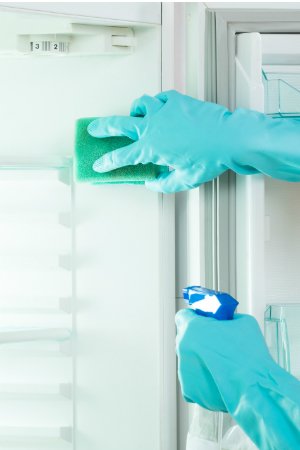
4. Refresh your fridge.
If your refrigerator smells a little stale, it’s likely the result of a mixture of trace amounts of food left behind over time. To get rid of less-than-fresh odors, try cleaning with vinegar. Clear your fridge of its contents, combine two parts water with one part vinegar in a spray bottle, and spritz it all over the appliance’s empty interior. Let the solution sit for 20 minutes to loosen up any dried spills before wiping everything down with a microfiber cloth. Repeat if necessary, and bid those funky smells farewell.
5. Clean your microwave.
The microwave is another appliance that’s notorious for accruing quite an odor over time, and liquid stains can stick on stubbornly no matter how much you scrub. Steaming your microwave’s interior first, though, effectively loosens up even the toughest gunk. Just place a small glass bowl of equal parts water and vinegar (½ cups to one cup each, depending on how deep a steam you think you might need) and microwave it for five to 10 minutes. To prevent the bowl of vinegar and water from boiling over, place a toothpick in the solution before hitting “start”—the wooden object will attract any bubbles that form on the boiling liquid so that they don’t rapidly rise to the top and overflow. Once the machine’s timer sounds, you should be able to wipe away the grime and grease from the steamed interior with ease.
6. Get rid of litter box odors.
Cat owners know the unpleasant stench of a litter box in need of freshening up. With vinegar on hand, however, there’s a single-ingredient solution that can tackle the offending smell in three quick steps. Empty the litter box, fill it with ½ inch of vinegar for 20 minutes, and rinse with cold water. Once the box gets refilled with kitty litter, pet owners and their guests can breathe easy in well under an hour’s worth of work.
7. Descale your tea kettle.
Consistent tea-drinking habits gradually coat the interior of a kettle in limescale—unsightly and unsavory white calcium deposits left behind when hot water evaporates. Fortunately, cleaning with vinegar (a natural descaling agent) will restore your kettle to its original state. Fill it halfway with equal parts cold water and white vinegar, then either turn on the stove under the kettle or plug in your electric appliance to bring the solution to a boil. Once the water is boiling, turn off the heat and allow the vinegar-water solution to sit in the kettle for 30 minutes to an hour. Empty the kettle and rinse the interior with cold water and wipe away any lingering limescale with a clean, damp cloth (no scrubbing necessary). Then, boil clean water for your next beverage to prevent any vinegary aftertaste from seeping into future cups of tea.
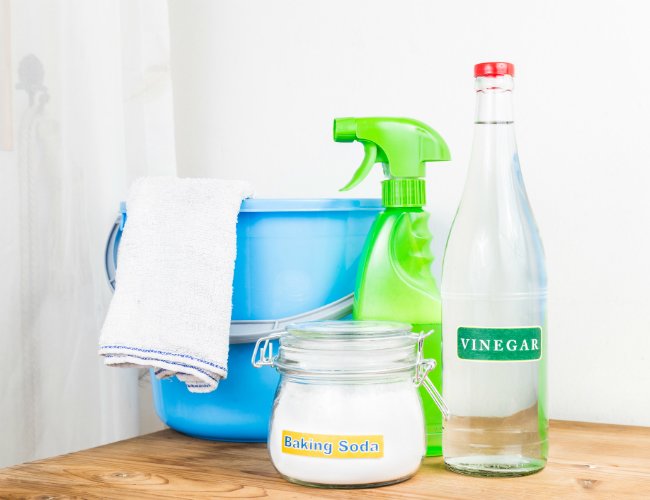
Dos and Don’ts of Cleaning with Vinegar
- Do use vinegar and water as a general cleaning agent on countertops (except for those made of natural stone), windows, and unwaxed floors. it’s a safe, biodegradable, health-friendly alternative that’s been a staple of household cleaning for generations.
- Don’t use vinegar on waxed wood floors; it will strip the finish and leave you with dull, damaged planks.
- Don’t use too much vinegar solution on unwaxed wood floors, since standing water can create a host of problems from warping to mildew to mold.
- Don’t EVER combine vinegar with bleach or ammonia. Each of those combinations results in chloramine, a toxic vapor that’s hazardous to your health.
